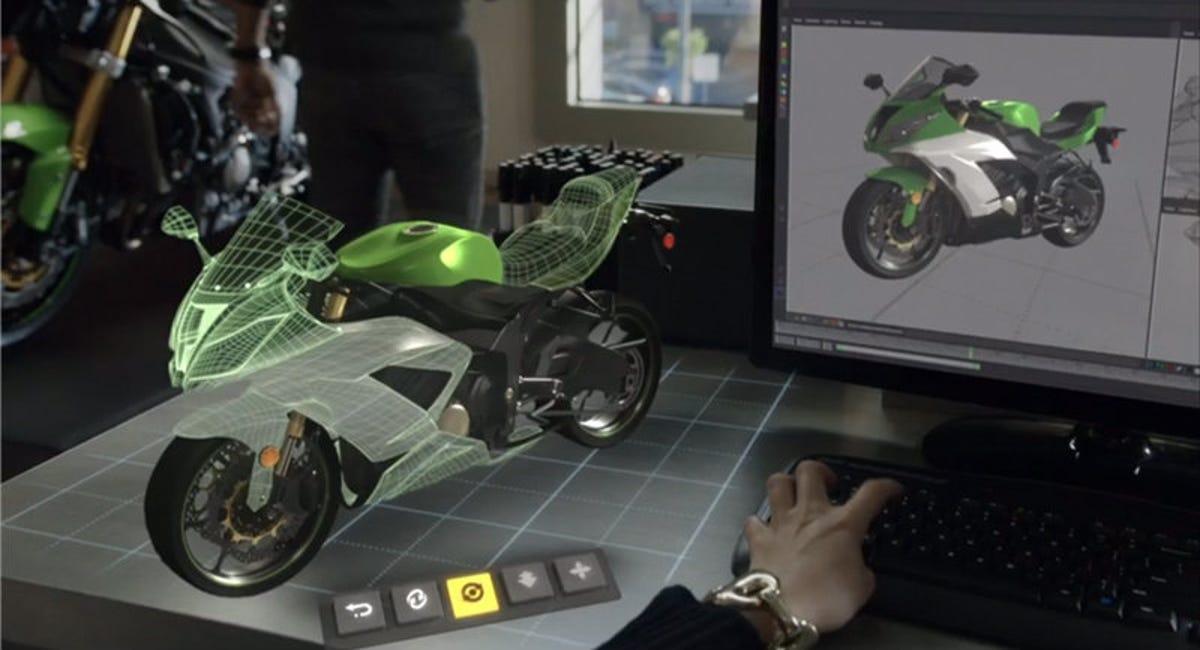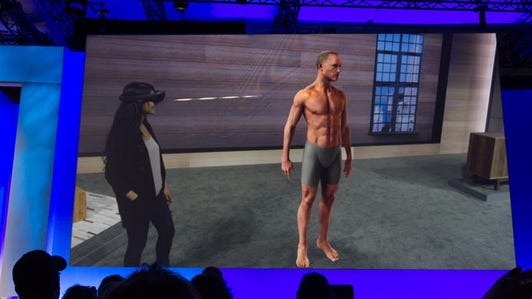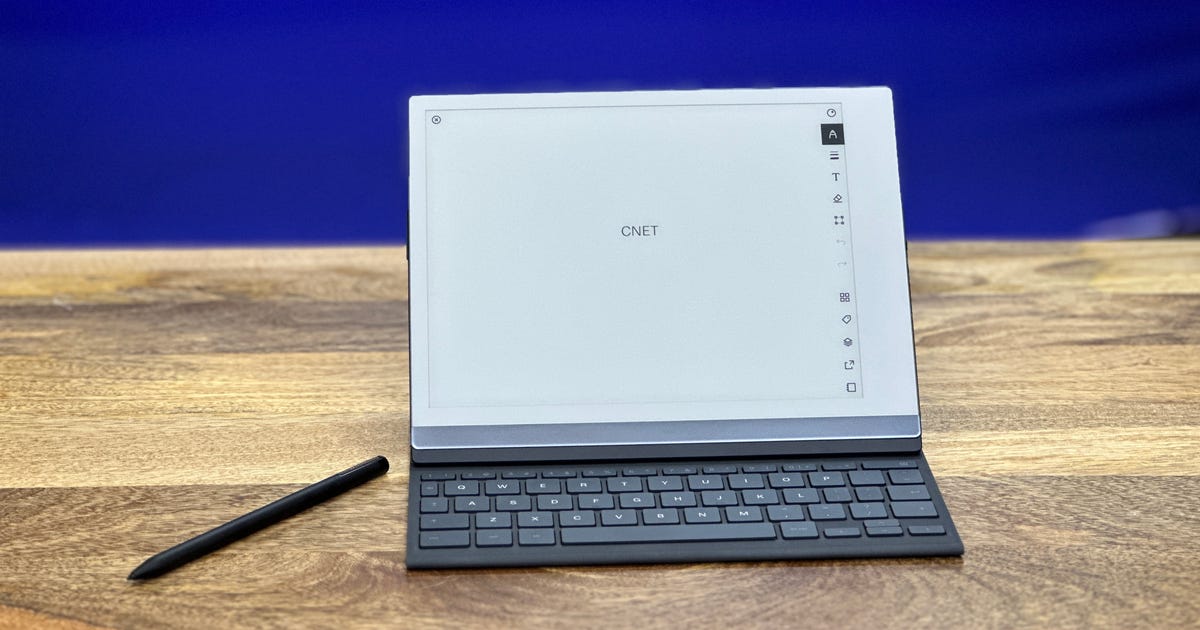 Enlarge Image
Enlarge ImageScreenshot by David Katzmaier/CNET
Microsoft on Wednesday unveiled a device called HoloLens, marking its entry into the increasingly popular field of augmented reality.
Similar to virtual reality, AR technology incorporates apps and services into the real world. The best-known devices in those areas are Google Glass, which lets people see images and text layered into their field of vision, and the more immersive Oculus Rift, a virtual reality device.


Now playing:
Watch this:
5 things you need to know about Microsoft HoloLens
1:39
Microsoft is promising more with its new hologram programing. Alex Kipman, the man behind Microsoft’s Kinect device, called the HoloLens the “first fully untethered holographic computer.”
“We’re dreaming beyond virtual worlds, beyond screens, beyond pixels and beyond today’s digital borders,” he said at the company’s Windows 10 event. “We’re dreaming of holograms.”
The device will be available within the same time frame as Windows 10, which is expected later this year. The company did not give a specific price for the HoloLens, but CEO Satya Nadella said he wants both customers and enterprises to use it so pricing will reflect that.
Check out what the Microsoft HoloLens can do (pictures)






Microsoft hopes it can inspire customers to want its products, rather than feeling like they have to use them.
Pulling that off will be no easy feat, but it’s critical to Microsoft’s future. The company is aggressively simplifying its entire platform under Nadella’s “one Windows” vision, which promises to make the upcoming Windows 10 run across desktops, laptops, tablets and smartphones. To make this work, Microsoft is readying a significant change to how it and its developer community will deliver, manage and build next-generation software for every device — with one store, and one way for consumers to download and access programs across screens.
See also
- Windows 10 takes a second swing at the future of Microsoft’s OS
- Windows 10: Nine things you need to know
- Surprise! Microsoft jumps to Windows 10
- How to install Windows 10 Technical Preview as a virtual machine
- Microsoft HoloLens: not a hologram, exactly, but Microsoft’s first strike in an augmented-reality turf war
The HoloLens would be another device for Microsoft’s hardware network. It has see-through lenses, spatial sound, and motion sensors to capture information about the environment, according to Kipman. A holographic processing unit allows the device to understand gestures, voice and the environment around you in real time.
Microsoft hopes that already existing augmented and virtual reality companies, like Ocuclus VR, Magic Leap and Google Glass, will use Microsoft’s hologram programing for their own devices.
“This is the next generation of computing,” Kipman said. “This is the next-generation PC.”
The company boasts many uses for its augmented reality tech. HoloStudio is the program that lets users create holograms. A demo shows how a user can design a quadcopter within the program and then use a 3D printer to create the actual aircraft.
Microsoft said it is also working with NASA’s Jet Propulsion Laboratory to bring holograms to scientific research. The agency expects to be “controlling rovers on Mars” with the HoloLens by July.




